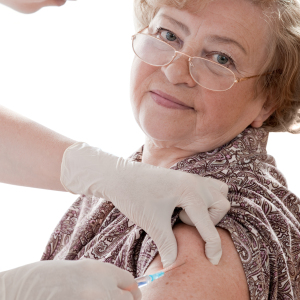One thing we have learned during the pandemic is that medical innovation cannot rest on its laurels. We should expect relentless commitment toward future innovation from the private and public sectors that fund such endeavors, the regulatory bodies that review and approve new treatments, and institutions such as the Centers for Disease Control and Prevention that provide swift and straightforward recommendations.
We should not wait for the subsequent pandemic or variant mutation as a society. Instead, we must ensure that we are always one step ahead of the next public health crisis.
Multiple innovators are on the cusp of developing new treatments and vaccines to defeat the coming variants of COVID-19 or the old public health nemesis, the flu. For example, there are promising antibody therapies under review at the FDA that treat and prevent COVID infections.
While innovation against flu continues, there are already approved enhanced vaccines for influenza. The latter vaccines are referred to as Enhanced Influenza Vaccines (EIVs). Multiple such vaccines are currently available in the marketplace, which is a good thing since their presence enhances economic competition while providing healthcare professionals and patients numerous access opportunities.
Most important, all of the EIVs have demonstrated a better vaccine response for older adults susceptible to poor outcomes due to flu compared to vaccines used in the past.
Earlier this year, the Advisory Committee on Immunization Practices influenza working group presented data that not one EIV has demonstrated enhanced effectiveness or safety amongst its peers. A simple recommendation from ACIP that older patients should preferably receive any of the EIV currently in the marketplace will provide further certainty to healthcare professionals and their patients. Such guidance will ensure that the supply of the EIVs is robust, as several different manufacturers will be involved in supplying these vaccines. In addition, providing widespread flu vaccination with improved effectiveness could be especially important for the 2022-23 season. Not only will masking and other preventive measures likely cease, but we are also noticing a harbinger of what is ahead this winter by looking at flu rates in the Southern Hemisphere, which have been surging in the last several weeks.
As healthcare professionals, we focus on helping our patients achieve a healthy life — sometimes with medications that treat disease and progressively more in administering vaccines and other preventive therapies. The recent pandemic has taught us that we should never undermine the U.S. biopharmaceutical innovation model. After all, it is because of the current system that we have effective vaccines, antibody therapies and oral antivirals available and in development.
We should always strive for a better therapy while championing the competitive market forces that help balance our patients’ economic and outcomes needs.
Opportunities to provide preventive treatments such as EIVs while enhancing competition through multiple biopharmaceutical companies manufacturing the vaccines is a win-win for everyone involved and in our pursuit of better patient care and lower healthcare costs.

